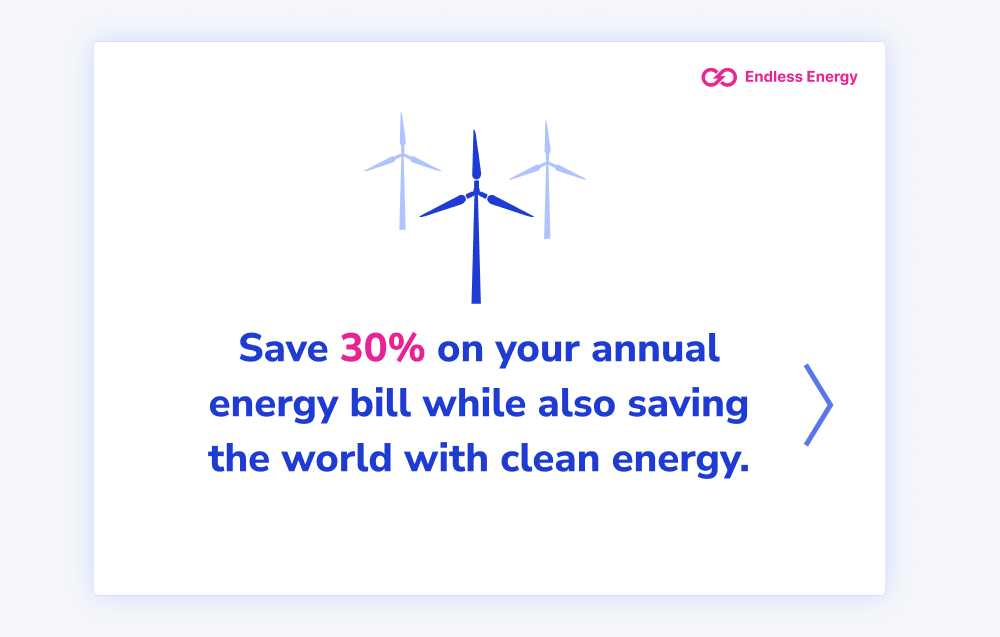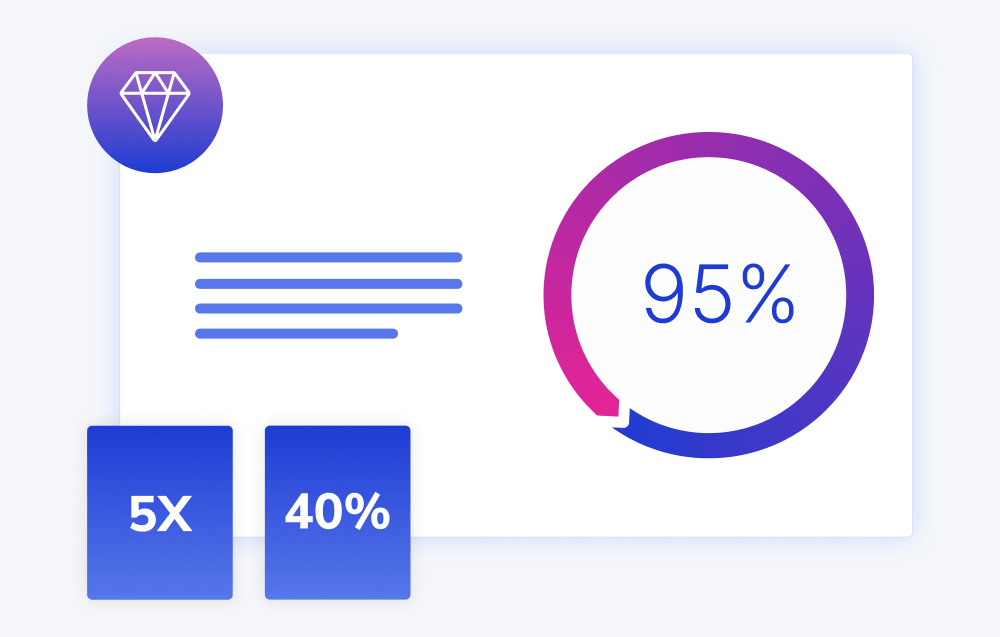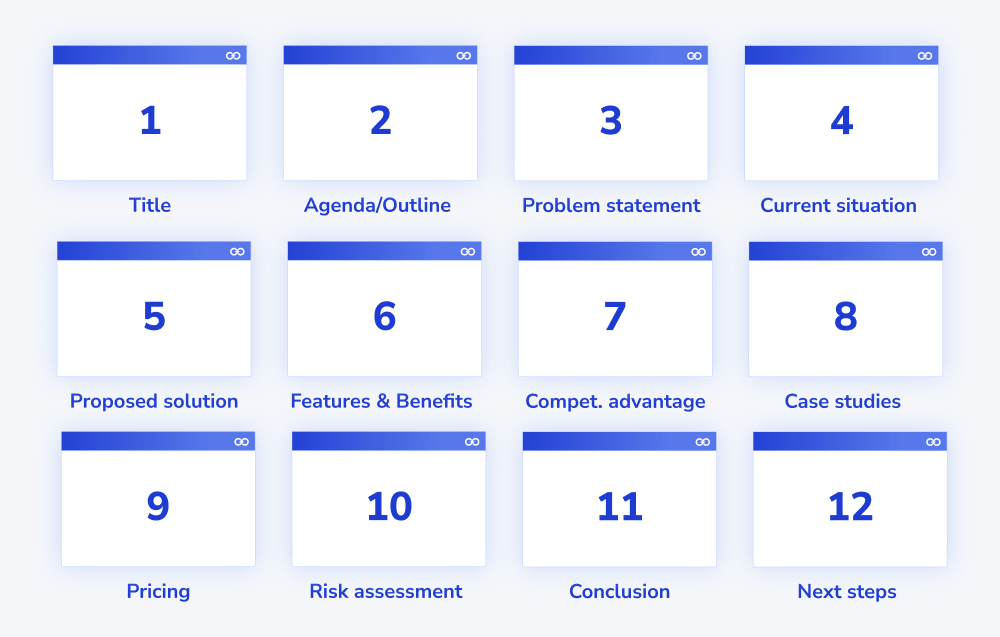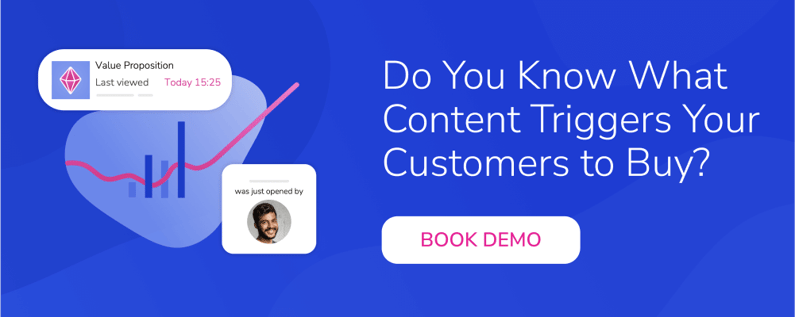B2B sales presentations are crucial because they allow you to deeply understand your prospect's needs and tailor your pitch to address their specific challenges. By showcasing your expertise and the value you offer, presentations effectively convince them that your product or service is the perfect solution for their business.
This targeted approach builds trust and positions you as the ideal partner to drive their success. In order to persuade your audience to buy your product or service, you need to create a winning sales presentation.
In this blog post, we will uncover the top 10 secrets that can help you achieve just that.

From Good to Great: 10 Tips for Crafting a Winning Sales Pitch
From understanding your audience to leveraging technology, these expert tips will help you create a powerful and engaging sales presentation that leaves a lasting impression on your prospects. So, let's dive in and explore these winning secrets.
Here's a quick summary of the tips:
1. Know Your Audience
The key to a successful sales presentation is understanding your audience. By understanding who you're presenting to, you can tailor your content and messaging to resonate with their specific needs, preferences, and pain points.
You can gather information about your audience by conducting market research, studying your existing customers, or even reaching out to prospects for feedback.
Once you have a clear understanding of your target audience, you can customize your presentation to address their concerns, provide relevant examples, and speak their language. This personalized approach will help you build rapport with your audience and increase your chances of closing the deal.
2. Structure Your Content Clearly
A clear and logical structure is essential for an effective sales presentation. By organizing your content in a way that's easy to follow, you'll help your prospects retain the information and understand your key messages.
Start by outlining the main points you want to cover and then arrange them in a logical order. Use visual elements, headings, and subheadings to break up your content and make it easier to digest.
By guiding your audience through your presentation, you'll make it easier for them to follow your train of thought and stay engaged.
To further improve the flow of your presentation, use transitions between sections and slides. These can be simple phrases like "Now that we've discussed X, let's move on to Y" or visual cues like arrows and icons.
Example of a sales presentation structure:
3. Start with a Strong Opening
Now that you know your audience, it's time to get their attention with a strong opening. The first few minutes of your presentation are critical, as they set the tone for the rest of your talk. To create an engaging and memorable introduction, consider using a powerful quote, a surprising statistic, or a thought-provoking question.

You could also share a personal story or a customer success story to build an emotional connection with your prospect.
A strong opening not only captures your audience's attention but also establishes your credibility as an expert in your field. By demonstrating that you understand their challenges and have valuable insights to offer, you'll keep your audience engaged and eager to hear more.
|
👉 How you begin your sales presentation will set the tone and trajectory of your entire meeting. Whether you’re a seasoned sales professional or you’re about to have your first sales meeting, it’s always best to show up prepared so you can leave a memorable impression on your prospects. Read more about How to Begin Your Sales Presentation. |
4. Tell a Compelling Story
Storytelling is a powerful tool in sales presentations, as it can help you connect with your audience on an emotional level. By sharing a compelling story, you can make your content more relatable and memorable, increasing the chances that your prospects will remember your message long after the presentation is over.
To incorporate storytelling into your sales presentation, consider sharing a customer success story, a case study, or even a personal anecdote that illustrates the benefits of your product or service. When crafting your story, focus on the transformation or the positive outcome that resulted from using your offering. This will help your audience envision the value they could gain from working with you.
|
⭐ Bonus read: Understanding the science behind buyer behavior and cognitive biases can strongly influence how you tell a story that truly resonates. Explore this topic from our blog The Impact of Buyer Behavior and Cognitive Biases on Sales Performance. |
5. Use Visuals Strategically
Visuals play a crucial role in sales presentations, as they can help you convey complex information in an easily digestible format. By using visuals strategically, you can enhance your message, make your presentation more engaging, and help your audience retain the information.
Consider incorporating various visual elements such as graphs, charts, images, videos, and infographics to create a more dynamic presentation. Infographic ideas can be particularly effective for simplifying complex data and presenting it in a visually appealing way.
When using visuals, keep them simple and avoid clutter. Stick to one main idea per slide and use high-quality images that are relevant to your content. Also, ensure that your visuals are consistent with your brand identity and that they complement your overall presentation design.

6. Engage Your Audience
Audience engagement is key to a successful sales presentation. To keep your audience interested and involved, encourage interaction and participation.
Ask open-ended questions, conduct polls, or initiate group discussions to make your presentation more dynamic.
Another effective way to engage your audience is by using storytelling techniques and sharing personal experiences. This can help create a connection with your audience and make your presentation more relatable. Lastly, maintain eye contact and use body language to project confidence and establish rapport.
7. Handle Objections Effectively
Addressing objections is an essential part of any sales presentation, as it helps you address concerns and demonstrate the value of your offering. To handle objections effectively, be prepared by anticipating the most common concerns your audience might raise.
When an objection arises, listen carefully and empathize with the concern. This shows that you understand their viewpoint and are genuinely interested in finding a solution. After addressing the objection, provide a clear and concise response that highlights the benefits of your product or service. Remember to stay composed and professional throughout the process.
|
👉 Sales resistance is an opportunity to uncover customer needs and develop a solution. By understanding the reasons behind the resistance, you can better build trust and create more successful outcomes. Learn How To Interpret and Overcome Sales Resistance in Sales Conversations. |
8. Practice and Refine Your Delivery
Rehearsing your sales presentation is crucial for ensuring a smooth and confident delivery. By practicing your presentation, you'll be able to identify any weak points, refine your content, and improve your overall performance.
Take the time to rehearse your presentation multiple times, paying close attention to your pacing, body language, and tone of voice.
Consider recording yourself or practicing in front of a trusted colleague to receive constructive feedback. This will help you identify areas for improvement and make the necessary adjustments before your presentation.
9. Leverage Technology
Technology can elevate your sales presentations from informative to truly captivating. By using tools and software that enhance your presentation, you can create a more engaging and memorable experience for your audience.
Popular presentation tools such as PowerPoint, Keynote, and Google Slides offer various features and templates to help you create visually appealing slides.
But the real edge comes from sales enablement platforms like Showell. This all-in-one solution lets you flawlessly manage, present, share materials, and track audience engagement afterward. Imagine managing presentations and collateral within a single, on-brand app that seamlessly integrates with your existing tools.
For remote settings, video conferencing platforms like Zoom or Teams provide screen sharing, virtual backgrounds, and breakout rooms to keep your audience engaged. Embrace these technologies to stay ahead and leave a lasting impression.
 10. End with a Call to Action
10. End with a Call to Action
Closing your sales presentation with a clear and compelling call to action (CTA) is essential for driving your audience to take the desired next step. Your CTA should be concise, persuasive, and tailored to the specific action you want your audience to take, whether it's scheduling a follow-up meeting, signing up for a demo, or purchasing.
Ensure your CTA aligns with your presentation's overall objective and reinforces the value of your offering. By ending with a strong CTA, you'll provide your audience with a clear path forward and increase your chances of closing the deal.
Creating a winning sales presentation involves a combination of knowing your audience, crafting a strong opening, structuring your content clearly, and leveraging storytelling, visuals, audience engagement, objection handling, practice, and technology.
Showell: Sales Presentation App
Effective sales presentations are the cornerstone of successful business development. They empower you to delve into your prospect's specific challenges, tailor your message accordingly, and showcase how your product or service is the perfect solution. This targeted approach fosters trust and positions you as a trusted advisor, driving them towards a buying decision.
Now that you're equipped with these powerful strategies, it's time to put them into practice and experience the difference Showell can make in your sales presentations!
Showell is a comprehensive sales enablement platform that streamlines content management, presentation delivery, audience engagement tracking, and post-presentation follow-up. To get started, book a demo with us or get Showell Free!
Learn next:





